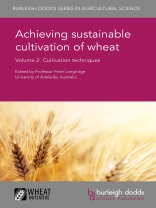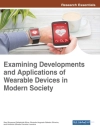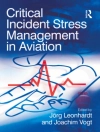- Reviews advances in cultivation practice such as seed establishment and more efficient irrigation techniques;
- Summarises developments in ‘climate smart’ agriculture such as conservation tillage and organic wheat cultivation;
- Discusses ways of supporting smallholders improve wheat cultivation in North Africa and other regions in the developing world
Table of Content
Part 1 Wheat cultivation techniques
1.Variety selection in wheat cultivation: Arun Kumar Joshi, International Maize and Wheat Improvement Center (CIMMYT); Vinod Kumar Mishra, Banaras Hindu University, India; and Simanchal Sahu, Orissa University of Agriculture and Technology, India;
2.Establishment and root development in wheat crops: Peter J. Gregory and Christina K. Clarke, University of Reading, UK;
3.Conservation tillage for sustainable wheat intensification: the example of South Asia: Vijesh Krishna, Georg-August University of Göttingen, Germany; Alwin Keil, International Maize and Wheat Improvement Center (CIMMYT), India; Sreejith Aravindakshan, Wageningen University, The Netherlands; and Mukesh Meena, Indian Institute of Soil and Water Conservation, India;
4.Improving water management in winter wheat: Q. Xue, J. Rudd, J. Bell, T. Marek and S. Liu, Texas A&M Agrilife Research and Extension Center at Amarillo, USA;
5.Post-harvest wheat losses in Africa: an Ethiopian case study: Tadesse Dessalegn, Tesfaye Solomon, Tesfaye Gebre Kristos, Abiy Solomon, Shure Seboka and Yazie Chane, Ethiopian Institute of Agricultural Research, Ethiopia; Bhadriraju Subramanyam and Kamala A. Roberts, Kansas State University, USA; Fetien Abay and Rizana Mahroof, South Carolina State University, USA;
Part 2 Wheat crop management
6.Wheat crop modelling to improve yields: J. R. Guarin and S. Asseng, University of Florida, USA;
7.Integrated crop management of wheat: Brian L. Beres, Reem Aboukhaddour and Haley Catton, Agriculture and Agri-Food Canada, Lethbridge Research and Development Centre, Canada;
8.Organic production of wheat and spelt: T. F. Döring, Humbolt-Universität zu Berlin, Germany;
9.Durum wheat: production, challenges and opportunities: J. M. Clarke, K. Nilsen, D. Khitiri, X. Lin and C. J. Pozniak, University of Saskatchewan, Canada; and K. Ammar, International Maize and Wheat Improvement Center (CIMMYT), Mexico;
Part 3 Improving wheat cultivation in the developing world
10.Supporting smallholders in improving wheat cultivation: Tinashe Chiurugwi, Simon Kerr, Ian Midgley, and Lesley Boyd, National Institute of Agricultural Botany (NIAB), UK; Johnson Kamwaga, Food Crops Research Centre – Njoro, Kenya; Peter Njau, Highlands Agri-consult Services Ltd, Kenya; Terry Van Gevelt, University of Cambridge, UK; Claudia Canales and Max Marcheselli, the Malaysian Commonwealth Studies Centre (MCSC) and the Cambridge Malaysian Education and Development Trust (CMEDT), UK;
11.Improving wheat cultivation in Asia: Rajiv Kumar Sharma, Global Wheat Improvement Program – CIMMYT, India;
12.Improving wheat production in the Central and West Asia and North Africa (CWANA) region: W. Tadesse, A. Amri, M. Sanchez-Garcia, M. El-Bouhssini, M. Karrou, S. Patil, F. Bassi and M. Baum, International Center for Agricultural Research in the Dry Areas, Morocco; and T. Oweis, International Center for Agricultural Research in the Dry Areas, Jordan;
About the author
Professor Theib Oweis is Director of the Water, Land and Ecosystems Program (WLEP) at the International Centre for Agricultural Research in the Dry Areas (ICARDA). He is a jointly appointed Distinguished Professor – International Platform for Dryland Research and Education at Tottori University, Japan. Professor Oweis is widely regarded as one of the world’s leading authorities on water management in agriculture.












